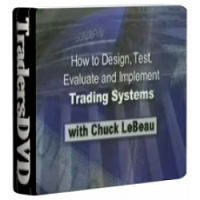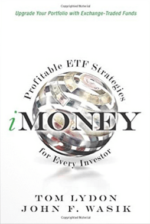Tom Lydon is the editor of ETFTrends.com and the president of Global Trends Investments. He has been involved in money management for more than 20 years. He began his career with Fidelity Investments’ Institutional Division.
Tom Lydon & John F.Wasik – Profitable EFT Strategies for Every Investor
Description
The Up-to-the-Minute Guide to ETF Investing: Pick the Right ETFs for Your Unique Goals!
“The authors cover the ETF waterfront. Whether you are a young investor just starting out or a seasoned stock veteran looking for new investment opportunities, this book is a valuable resource.”
Sam Stovall, Chief Investment Strategist, Standard & Poor’s Equity Research
“Finally! Lydon and Wasik objectively analyze exchange traded funds for the average person. We particularly liked iMoney‘s comparisons with more familiar mutual funds, the clear discussions about risks, and the varying viewpoints from some of the industry’s smartest minds.”
Alan Lavine and Gail Liberman, syndicated columnists for Marketwatch.com and authors of Quick Steps to Financial Stability.
Smart investors have made ETFs today’s hottest investment. iMoney is the only ETF investment guide with up-to-the-minute advice that reflects today’s ETF marketplace: advice that is fully customized to your specific investment goals.
The authors explain exactly how ETFs fit into today’s investment universe. Even better, they present specific roadmaps, strategies, and model portfolios for a wide range of investors, from recent college graduates through retirees.
You’ll learn how to build and monitor your ETF portfolio; choose among the fast-growing array of ETFs; and profit from changing global market trends. The authors discuss domestic and foreign stock ETFs; sector, commodity, and currency ETFs; fixed income ETFs, long/short ETFs, and even “actively managed” ETFs. They preview emerging industry trends, and objectively assess the key criticisms that have recently been leveled at ETFs.
· Tomorrow’s ETF book, not yesterday’s!
Reflects the newest ETFs and strategies, and prepares you for emerging market trends
· By two of the world’s leading ETF experts…
…Tom Lydon, founder of ETFTrends.com, the nation’s #1 consumer ETF site, and John F. Wasik, global personal finance columnist
· Provides specific strategies and portfolio recommendations
Not just theory! Discover what to buy, based on your unique investment profile
· Covers every major type of ETF…
…including overseas, sector, commodity, currency, and bond ETFs…even long/short ETF strategies!
Download immediately Tom Lydon & John F.Wasik – Profitable EFT Strategies for Every Investor
About the Author
Tom Lydon is the editor of ETFTrends.com and the president of Global Trends Investments. He has been involved in money management for more than 20 years. He began his career with Fidelity Investments’ Institutional Division. He now regularly appears on CNBC’s “ETF Tracker,” a daily segment focusing on ETFs. His popular seminar, “How to Manage a Million-Dollar Portfolio,” has been attended by thousands of investors around the country. Mr. Lydon holds a bachelor of science in management from Babson College in Wellesley, Massachusetts.
John F. Wasik is the award-winning personal finance columnist for Bloomberg News, the world’s third-largest news service. His columns are seen by readers on five continents and posted on www.bloomberg.com. As the author of ten books, including the highly praised Merchant of Power and The Bear-Proof Investor, he has spoken from coast to coast. He earned his bachelor and master of arts degrees from the University of Illinois-Chicago and resides in Grayslake, Illinois, with his wife and two children. Visit him online at www.johnwasik.com.
Forex Trading – Foreign Exchange Course
Want to learn about Forex?
Foreign exchange, or forex, is the conversion of one country’s currency into another.
In a free economy, a country’s currency is valued according to the laws of supply and demand.
In other words, a currency’s value can be pegged to another country’s currency, such as the U.S. dollar, or even to a basket of currencies.
A country’s currency value may also be set by the country’s government.
However, most countries float their currencies freely against those of other countries, which keeps them in constant fluctuation.








